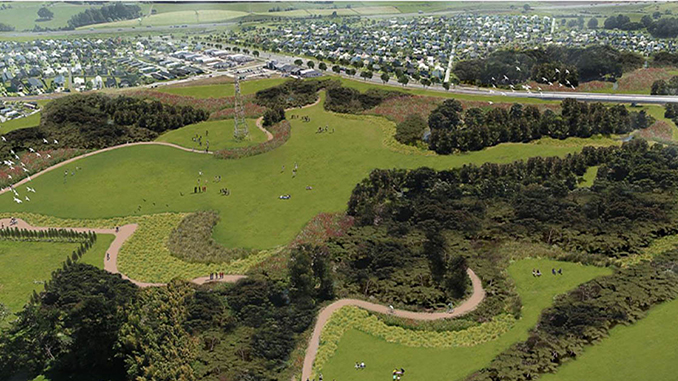
South Auckland’s 361-hectare Drury South Crossing subdivision – the largest business park development in the country – required a suitable storm and floodwater management solution under the mandates of the Auckland Council Unitary Plan. This prompted setting aside over 80 hectares for a system of ecological parks and recreation areas.
The project took home the Pipeline and Civil Project Award at the Water New Zealand Stormwater 2022 Conference.
The design team of Boffa Miskell and Tonkin + Taylor applied a green engineering approach to stormwater management across the site, including rain gardens, tree pits and swales, leading to a large central wetland. This central wetland is 3.5 hectares in size, located within the active floodplain of the Hingaia Stream, a significant ecological area.
The constructed wetland sits below a large mixed-use commercial precinct and, like the precinct itself, is one of the largest in New Zealand – taking over two years to complete and requiring the excavation of over 396,000 tonnes of earth. Located in one of Auckland’s deepest floodplains the wetland is designed to hold floodwater volumes of up to 58,900m³ – the equivalent capacity of 23.5 Olympic size swimming pools.
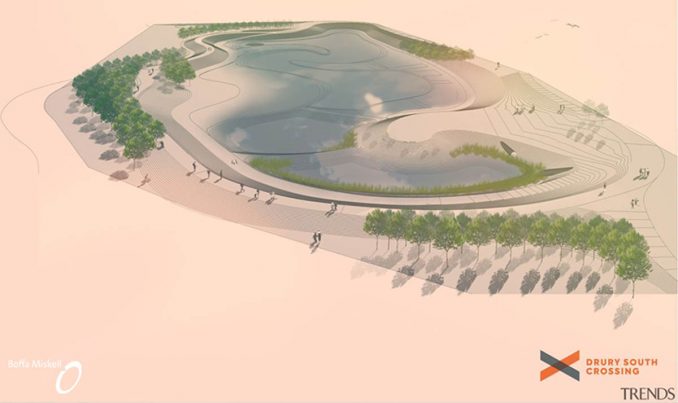
Input from Ngāti Tamaoho, Ngāti Te Ata, and Ngai Tai ki Tamaki resulted in the design including two forebays, a sinuous alignment, and a green outfall. Further collaboration with artists Ted Ngataki and Maaka Potini incorporated Tikanga Māori and embraced symbolism and metaphor as guiding principles. That process led to the embodiment of a tuna kuwharuwharu (longfin eel) within a functioning wetland; providing for cultural permanence and delivering an intergenerational landscape feature that provides diverse habitats and complex ecosystems.
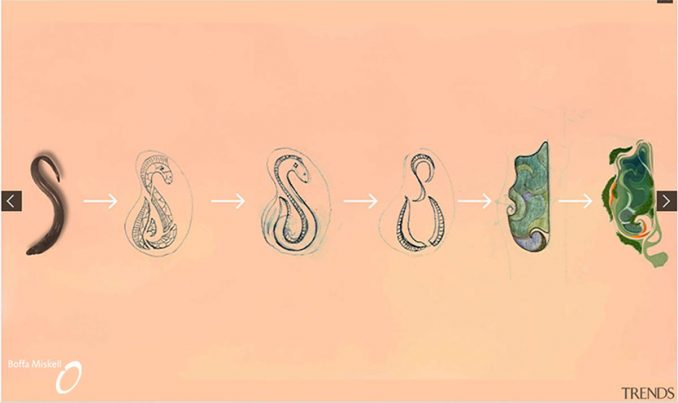
Boffa Miskell led the landscape architecture and ecological aspects of the project. Mark Lewis, the Landscape Architect for the wider project, says “We promoted a sinuous wetland design with a double forebay device. This offered an efficient treatment approach, diverse ecologies, and an opportunity for a strong landscape response for public enjoyment.
“Taking inspiration from the tuna that inhabit the adjacent Hingaia Stream, an iterative design process with Ted Ngataki and Tonkin and Taylor translated those representative forms, while consolidating the functional elements required for effective stormwater treatment and operation,” he continues.
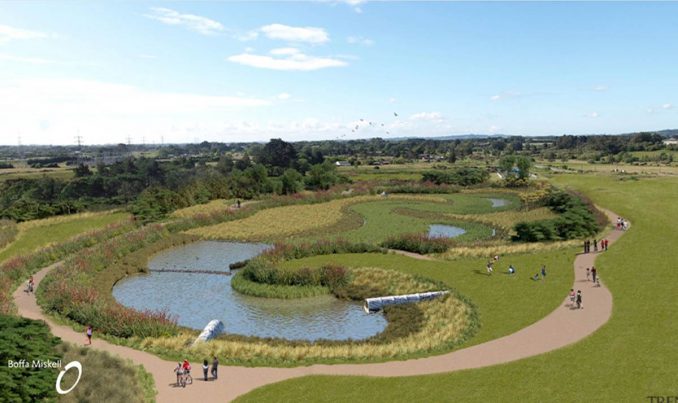
Multi-disciplinary workshops balanced requirements for aesthetics and function and developed a digital model for analysis and fine-tuning. The curved geometry inspired by the sinuous form of the tuna was achieved using detailed 3D modelling and providing precise machine control systems for Stevenson Mining – the company in charge of earthworks construction.
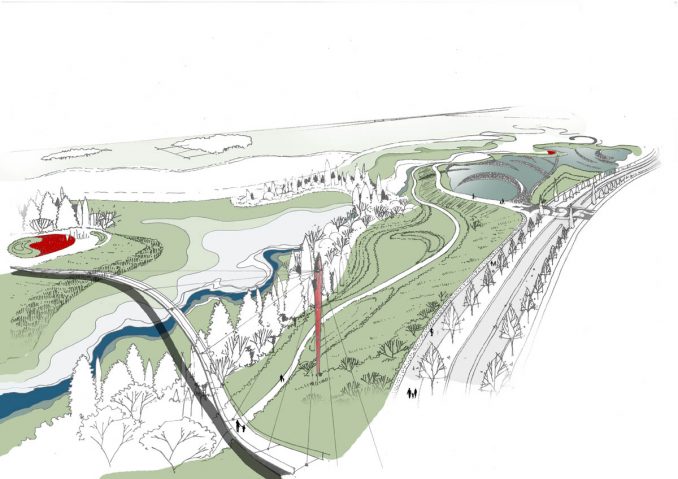
The team’s desire was to achieve the required engineering outcomes whilst creating a signature feature for the project. The result is a mosaic of terrestrial, wetland and aquatic habitats; providing an artwork at a landscape scale that can be viewed from the commercial precinct and explored by a network of paths.
Mark says that extensive research was undertaken to understand the area’s specific ecological values. The first stage of the project began more than ten years ago, with Boffa Miskell ecologists undertaking bird surveys and mapping of key vegetation Pre-construction surveys identified more than fifty bird species in the area, including eight endangered species. Creating new habitats for these bird species, such as the grey duck, red-billed gull, white heron, kākā, and pied shag was a priority.
The project team worked closely with Auckland Council and mana whenua to develop a revegetation strategy of diverse native planting types, representing the historic vegetation in the area, says Mark. “One of the key outcomes of our consultations with local iwi and hapū will see the establishment of hectares of harakeke and purei wetlands, and large stands of kahikatea, kanuka, podocarp, and broadleaf forest types. These restored natural systems will connect the mature vegetation remnants scattered across the site.”
The first stage of the restoration programme included more than a quarter of a million native plants introduced to help support the regeneration of indigenous birdlife. The number of plants will more than double by the time the project is completed.
Over the next few years, the project will continue, with further restoration and enhancement of the Hingaia and Maketu Streams, which meanders through the project’s open spaces, including many kilometres of walking and cycling trails to connect the wetland and open space recreation areas to Drury Village.
Drury South Crossing Stormwater Wetland 1
Location: Auckland, New Zealand
Landscape Architect: Boffa Miskell
Boffa Miskell Team
Mark Lewis
Katherine Eastman
Eddie Sides
Andrew Wen
Collaborators:
Ngati Tamaoho artists Ted Ngataki and Maaka Potini
Tonkin + Taylor
Plant People
Twomeys
Visual Craft
Benjamin Loh
Client Drury South Crossing
